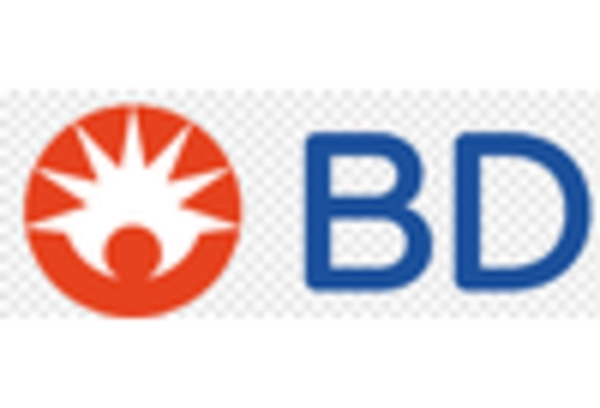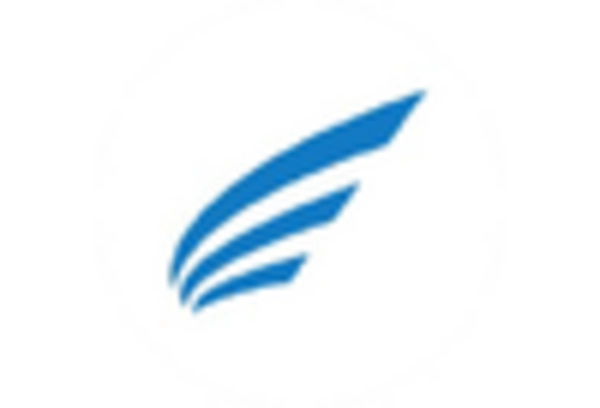Government Initiatives and Funding
Government initiatives aimed at enhancing public health infrastructure play a crucial role in driving the influenza diagnostics market. In Spain, the government has allocated substantial funding to improve healthcare services, particularly in the realm of infectious disease management. This funding often translates into the procurement of advanced diagnostic tools and technologies. The influenza diagnostics market stands to gain from these initiatives, as public health agencies prioritize the development and distribution of effective diagnostic solutions. Additionally, collaborations between government bodies and private sector companies may foster innovation in diagnostic methodologies, further propelling market growth. The commitment to enhancing healthcare capabilities indicates a supportive environment for the influenza diagnostics market, potentially leading to increased accessibility and affordability of diagnostic tests.
Rising Incidence of Influenza Cases
The increasing incidence of influenza cases in Spain is a primary driver for the influenza diagnostics market. Seasonal outbreaks and sporadic epidemics contribute to heightened demand for accurate and timely diagnostic tools. According to health statistics, the incidence of influenza in Spain has shown fluctuations, with peaks during winter months. This trend necessitates the availability of effective diagnostic solutions to manage outbreaks and ensure public health safety. The influenza diagnostics market is likely to benefit from this rising incidence, as healthcare providers seek reliable testing methods to identify and treat affected individuals promptly. Furthermore, the Spanish healthcare system's focus on improving patient outcomes reinforces the need for advanced diagnostic technologies, which could lead to increased investments in the influenza diagnostics market.
Rising Demand for Point-of-Care Testing
The increasing demand for point-of-care testing (POCT) is emerging as a significant driver for the influenza diagnostics market. In Spain, healthcare providers are increasingly adopting POCT due to its convenience and rapid results. This trend is particularly relevant in primary care settings, where timely diagnosis is crucial for effective patient management. The influenza diagnostics market is likely to see growth as more healthcare facilities invest in POCT technologies that enable immediate testing and diagnosis. The shift towards decentralized testing aligns with the broader healthcare trend of enhancing patient access to diagnostic services. As a result, the influenza diagnostics market may experience a surge in demand for innovative POCT solutions that cater to the needs of both healthcare providers and patients.
Increased Focus on Preventive Healthcare
The growing emphasis on preventive healthcare in Spain is significantly influencing the influenza diagnostics market. Public health campaigns aimed at promoting vaccination and early detection of influenza are gaining traction. This focus on prevention encourages individuals to seek diagnostic testing, thereby driving demand for influenza diagnostic tools. The influenza diagnostics market is likely to benefit from this trend, as healthcare providers align their services with preventive strategies. Moreover, educational initiatives aimed at raising awareness about the importance of early diagnosis and treatment may further stimulate market growth. The integration of preventive healthcare measures into the broader healthcare framework suggests a promising outlook for the influenza diagnostics market, as it aligns with the goals of improving population health.
Technological Innovations in Diagnostic Tools
Technological innovations are reshaping the landscape of the influenza diagnostics market. In Spain, advancements in molecular diagnostics, such as PCR and rapid antigen tests, are becoming increasingly prevalent. These technologies offer rapid results and higher accuracy, which are essential for effective disease management. The influenza diagnostics market is witnessing a shift towards these innovative solutions, as healthcare providers seek to enhance their diagnostic capabilities. The integration of digital health technologies, including telemedicine and mobile health applications, further complements these advancements by facilitating remote testing and monitoring. As a result, the market is likely to experience growth driven by the demand for cutting-edge diagnostic tools that improve patient care and streamline healthcare processes.

















Leave a Comment